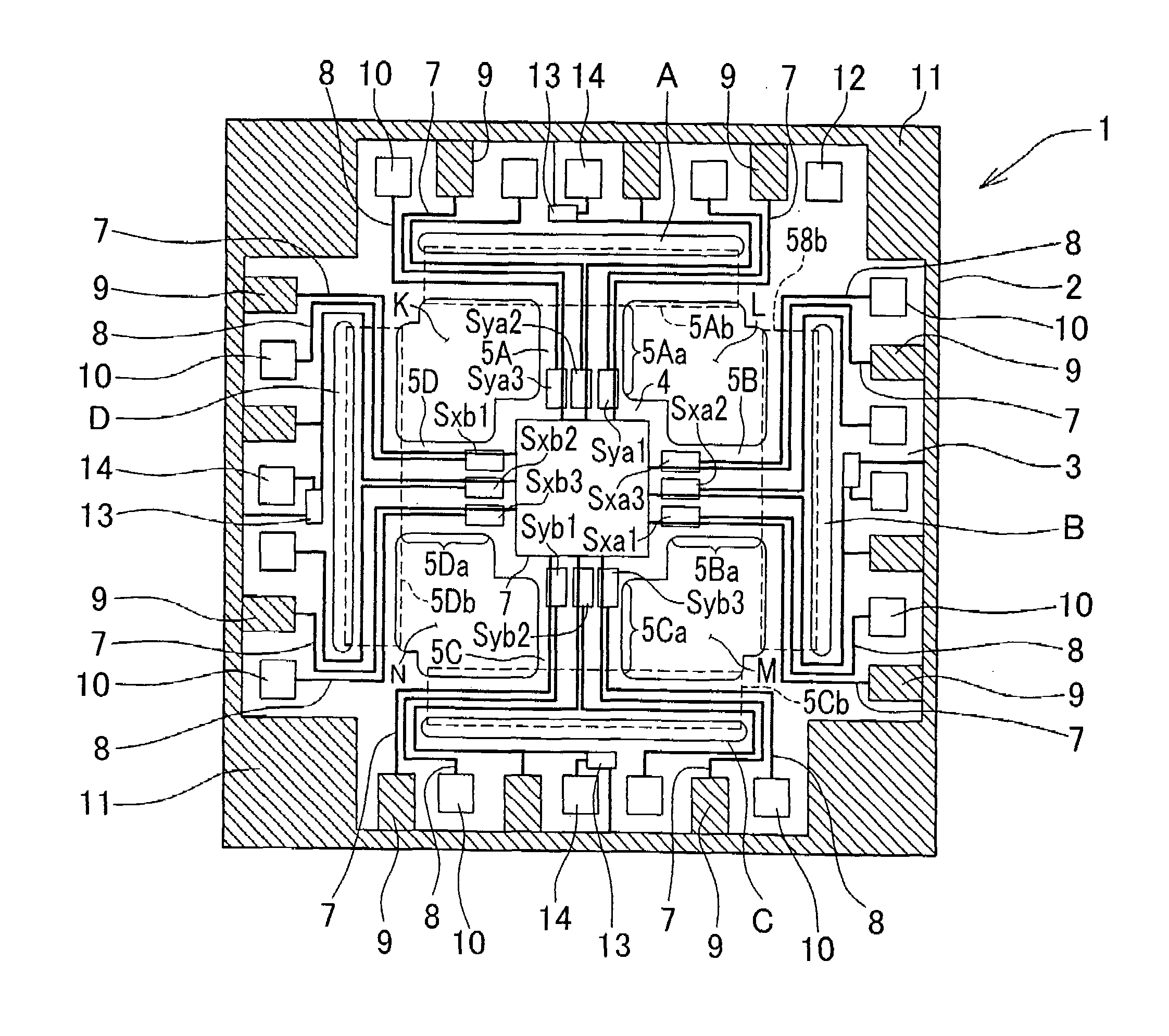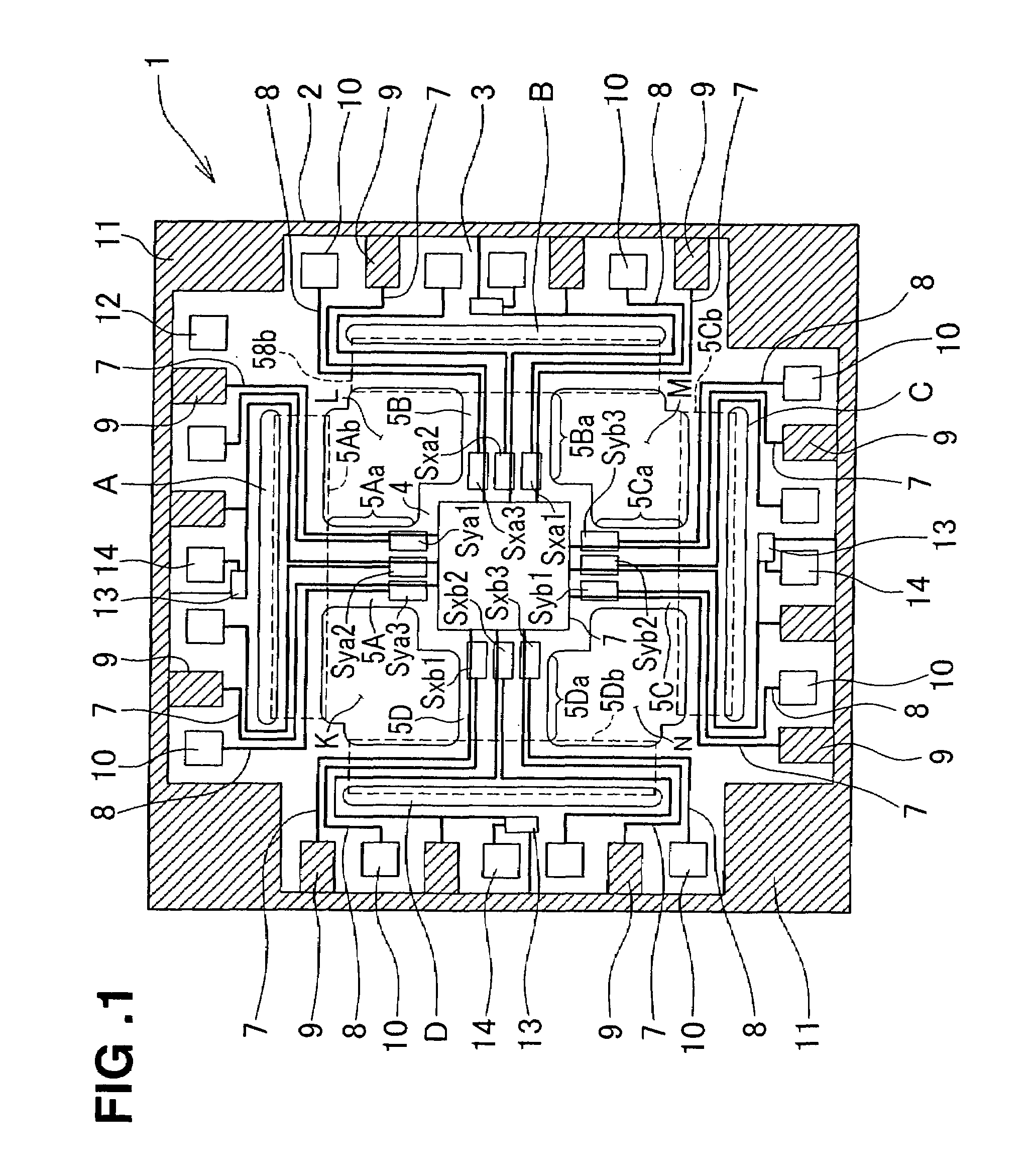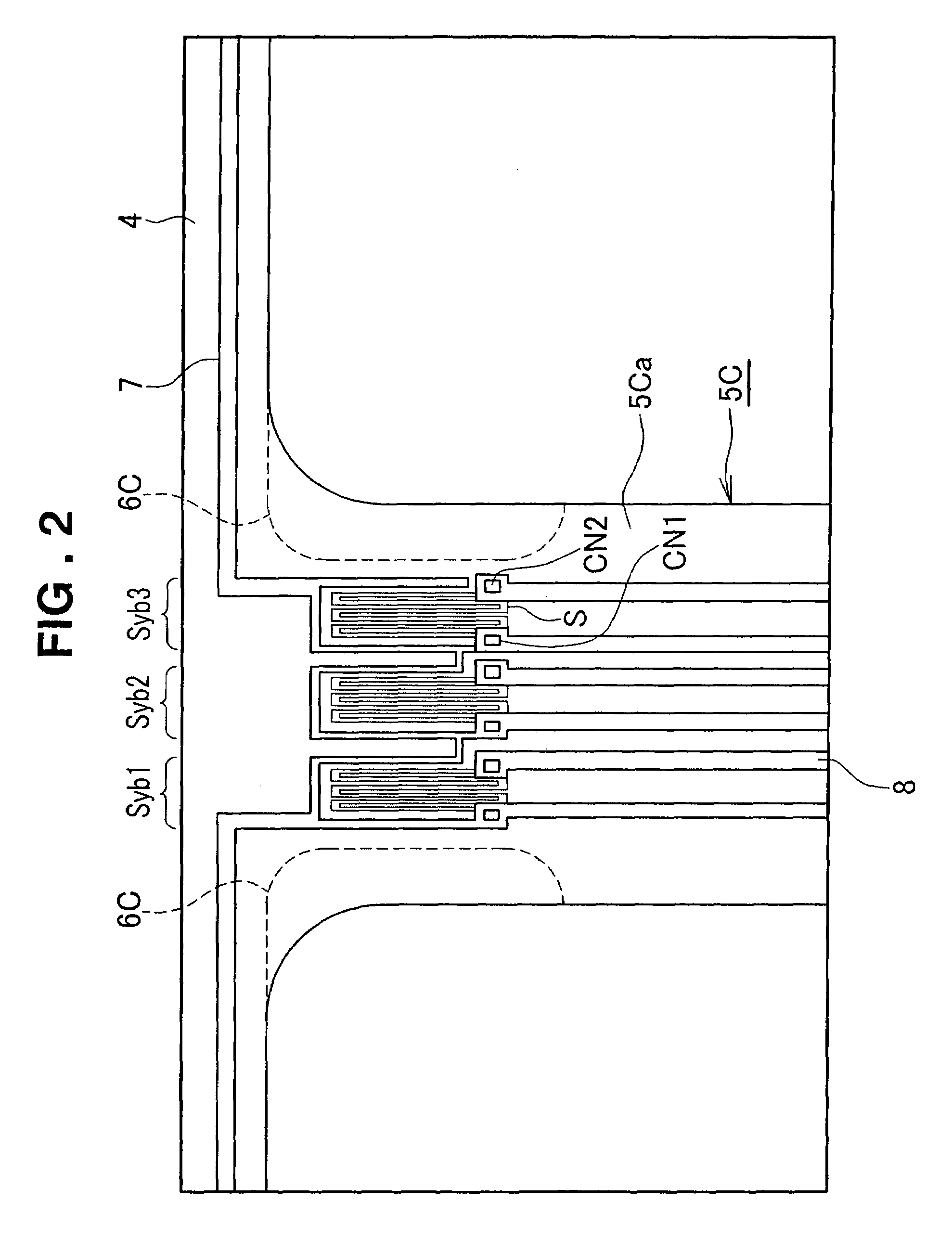Six-axis force sensor chip and six-axis force sensor using the same
a sensor chip and six-axis technology, applied in the direction of force/torque/work measurement apparatus, instruments, force measurement, etc., can solve the problems of low sensitivity of the sensor chip, the substrate of the semiconductor forming the sensor chip is susceptible to elastic deformation, etc., to reduce mutual interference, improve accuracy, robustness and reproducibility
- Summary
- Abstract
- Description
- Claims
- Application Information
AI Technical Summary
Benefits of technology
Problems solved by technology
Method used
Image
Examples
Embodiment Construction
[0088]Preferred embodiments of the invention will now be described, with reference to the accompanying drawings.
[0089]First, with reference to FIG. 1, a first preferred embodiment of a six-axis force sensor according to the invention will be described. In FIG. 1, the six-axis force sensor chip 1 of this preferred embodiment is formed using a semiconductor substrate 2 which is preferably square in plan shape. The six-axis force sensor chip 1 has a plate-like shape derived from the semiconductor substrate. The six-axis force sensor chip 1 is preferably made by applying semiconductor manufacturing process technology (etching processes such as photolithography, resist patterning, ion implantation, film-forming processes such as P-CVD, sputtering, RIE) to one of its surfaces, to work the plan shape of the square semiconductor substrate itself and to carry out film-forming in predetermined regions of one surface of the semiconductor substrate. In this way, the six-axis force sensor chip 1...
PUM
| Property | Measurement | Unit |
|---|---|---|
| radius | aaaaa | aaaaa |
| thickness | aaaaa | aaaaa |
| thickness | aaaaa | aaaaa |
Abstract
Description
Claims
Application Information
 Login to View More
Login to View More - R&D
- Intellectual Property
- Life Sciences
- Materials
- Tech Scout
- Unparalleled Data Quality
- Higher Quality Content
- 60% Fewer Hallucinations
Browse by: Latest US Patents, China's latest patents, Technical Efficacy Thesaurus, Application Domain, Technology Topic, Popular Technical Reports.
© 2025 PatSnap. All rights reserved.Legal|Privacy policy|Modern Slavery Act Transparency Statement|Sitemap|About US| Contact US: help@patsnap.com



